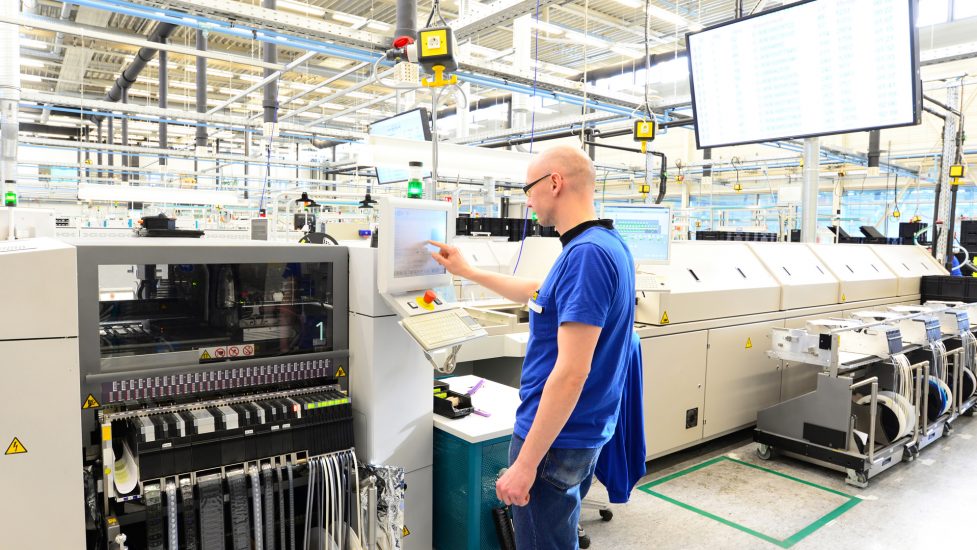Automation has eliminated many low-skill manufacturing jobs. But it has created new and growing opportunities in which higher levels of skill and education are required. However, there may not be enough workers to fill those jobs.
A 2018 study by Deloitte and The Manufacturing Institute found the skills gap may leave an estimated 2.4 million positions unfilled in the 10-year period ending in 2028.
One way to help close the gap is by incorporating viable industry certifications into existing college degree programs. Certifications are awarded after students pass a competency-based assessment from an independent third-party organization.
They are doing just that in Ohio University’s Bachelor of Science in Engineering Technology and Management degree program. Seniors take the exam to become a Certified Manufacturing Specialist (CMS) which is offered by the Association of Technology, Management, and Applied Engineering (ATMAE). It covers 16 content areas ranging from Non-Traditional Machining to Computer Integrated Manufacturing to Electronics.
Todd Myers, Ph.D. is chair of the Department of Engineering Technology and Management and the director of workplace and professional development in the Russ College of Engineering and Technology. He tells WorkingNation the rationale behind the decision to embed the CMS exam into Ohio University’s program was multi-fold.

“We wanted an external validation of the performance for students. So, you can have courses, you can have projects, you can have different assessments with tests. But the ability to have a third party that’s outside take a look and validate based on the student’s performance at how well they are performing in the subject matter areas, that was one of the reasons that we were interested as a department.”
“From the student’s standpoint, the ability to go through and then get that credential, you now are able to put those three initials after your name on your resume. And it provides a discussion item to the potential employers as you’re doing your interview of what this is about and what did you do.”
Myers says the student pass rate on the CMS exam is in the 90th percentile compared to roughly 58% nationally. He adds that certification as part of a school’s curricula has benefits for the manufacturing industry as well.
“Honestly, what I’ve been finding is there’s a lot of times when you talk to industry, they’re wanting a way to make sure that somebody is walking into their business and is able to perform and not going to need a year to be able to get up to speed. Knowing that the student has shown that they have the mastery of these particular areas gives them a comfort level that they know that they’re going to walk in and be productive within the first month.”
“Some manufacturers, depending on the school that you’re going to, you will hear things like, ‘Education is not listening to what industry wants.’ They want industry-recognized credentials to be able to validate that if somebody has a robotics course from group A or group B or group C that they’re exiting with similar knowledge or abilities. And I think what the industry is typically looking for is some type of validation that there was rigor and that learning occurred. But then when you start digging into those, what you find out is that they want, ‘Well, I’ve used brand A at my place.’ Another company uses brand C and another company uses brand D and that they’re actually looking for a certification on a unique particular item. Whereas the certified manufacturing specialist gives you much more of a ‘These people have the generalized skills to be able to do these now, and the ability to learn that specific content.’”

So why aren’t more programs incorporating certification exams into their curricula? One reason is finding a certification that matches what the school is teaching, according to Myers.
“What we found was is that this task, this certification aligns well with our program and what our objectives of the program are. And our objective is actually set by industry because we have an industrial advisory board, which comes and reviews our program once a year. It’s made up of over 20 individuals in manufacturing from different firms that typically would hire our students and/or our alumni who have succeeded and are now in senior management roles within those firms.”
Another reason is financial.
“One of the biggest challenges for us is these certification exams cost money,” notes Dr. Myers. “They cost money for the students who want to be able to sit and take the test. And then after you have it, typically they want you to join whatever organization is providing this, as well as pay for that certification. And then there’s a yearly membership or yearly renewal, and then continuing education requirements to be able to maintain that.”
At Ohio University, the testing fee is covered by an alumnus who saw the value in certification. Students then decide if the other expenses are manageable for them.
Manufacturing is facing a dearth of workers over the next decade. However, embedding manufacturing certifications at the college level is one way to provide students with better opportunities when entering the field, while giving the industry a new pool of potential workers who will be better able to adapt to, and take greater advantage of, the rapid advances in technology that are driving tremendous change.











